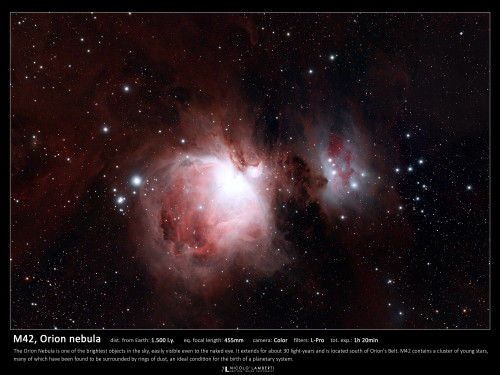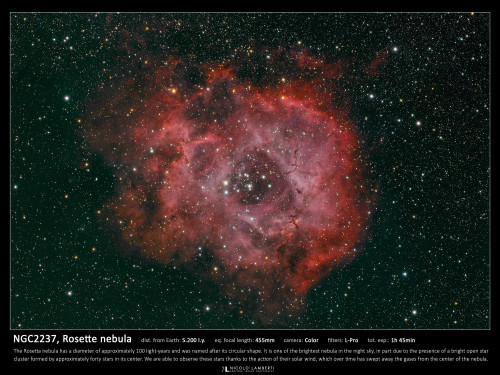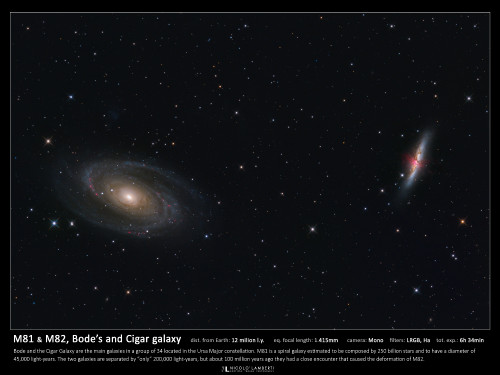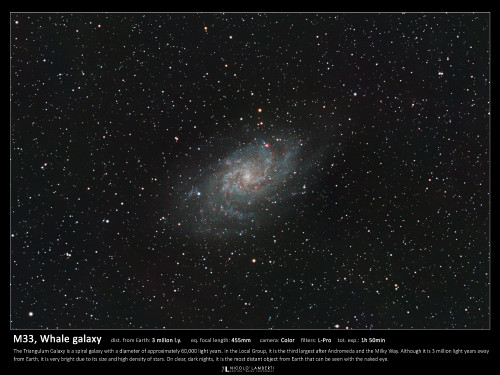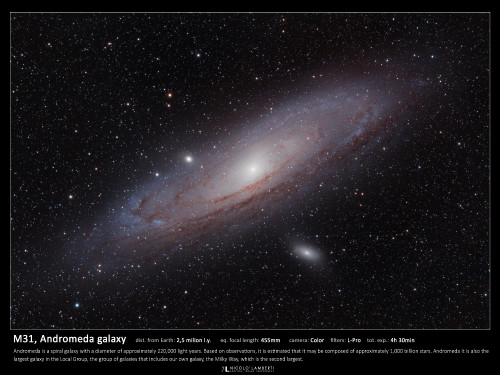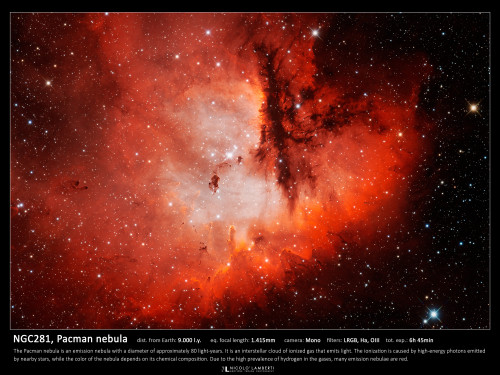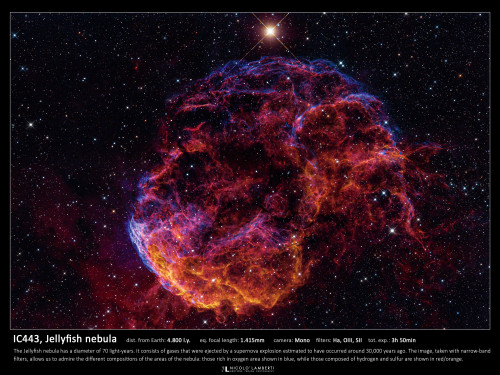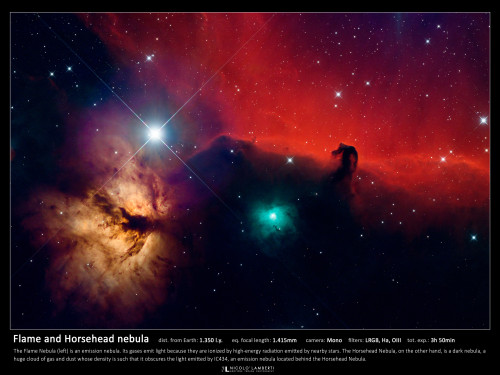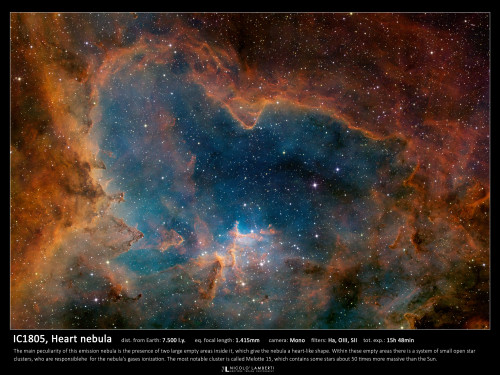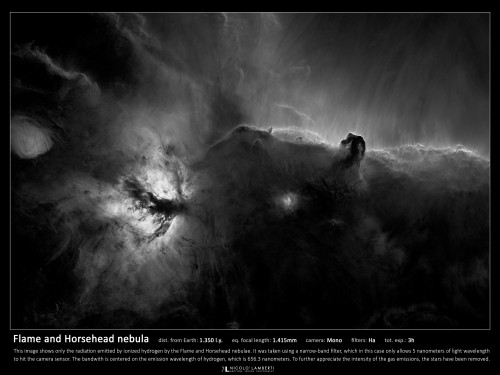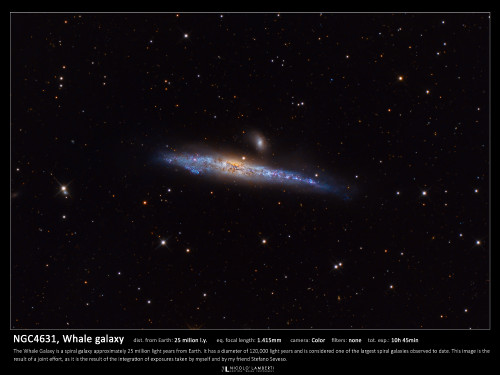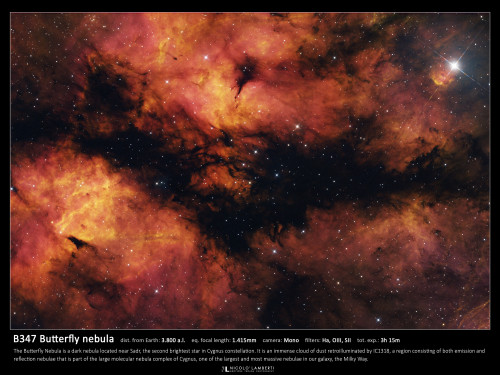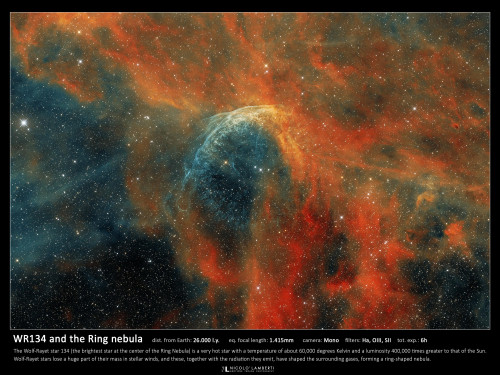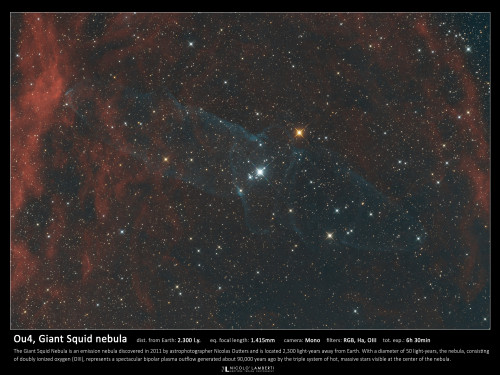Deep-Sky Object (D.S.O.)
Deep-Sky Object is term used in astronomy to denote any astronomical objects observable in the night sky not belonging to our solar system such as nebulae, stars, planets, asteroids and comets.
The first classification of these astronomical objects began with the invention of the telescope. The first catalogue was then published by Charles Messier in 1774 who had managed to identify 103 objects that he called nebulae. As observation tools improved, the nature of objects in terms of clusters, galaxies and interstellar clouds has been defined more precisely.
Today we have several catalogs with which we identify the wonders observable in the night sky:
Identified by the acronym: M, we have the objects listed in Messier’s catalogue, which lists 110 objects in the deep sky visible from the northern hemisphere, to which Charles Messier had access from France. The articles are listed in the catalogue under the letter M, followed by a number.
Identified instead by the acronym: NGC, we have over 7,800 items listed by the New General Catalog that was drawn up at the end of the nineteenth century.
By the acronym: IC we have the two Index Catalogs that rank about 5,000 other objects in addition to those listed by the NGC.
Finally, with the acronym: C we have the Caldwell catalog that contains 109 other objects of various kinds that can be observed only from the southern hemisphere.
The astronomical unit corresponds to about 150 million kilometers. This length constant, which derives from the value of the average distance between the planet Earth and the Sun, is used in astronomy mainly to measure distances within the solar system.
Light Year:
The light year is the main unit of measurement used in astronomy to express the distances between celestial objects placed outside the solar system. It is the distance that light travels, in a vacuum, in the time interval of a year.
The speed of light is 299,792.458 kilometers per second.
A light year is equal to 9.460.730.472.578 kilometers.
A parsec equals 3.26 light years.
Some examples of distances in the universe:
The light takes 1.28 seconds to cover the distance between the Earth and the Moon;
The light takes 8.20 seconds to cover the distance between the Sun and Earth;
Light takes 5.4 hours to cover the distance between Earth and Pluto;
The light takes 4.23 light years to cover the distance between Earth and Proxima Centauri, the nearest star to us;
Light takes 100,000 light years to travel the diameter of the Milky Way, our galaxy;
Light takes 2.5 million light years to cover the distance between Earth and the Andromeda galaxy.
Light takes about 12 million light years to cover the distance between Earth and M81, the Bode galaxy.
In astronomy, rarefied material, consisting of gas and dust, is found among stars within a galaxy. The galactic interstellar medium is filled with energy in the form of electromagnetic radiation.
Nebulae:
A nebula, is an interstellar cloud in which accumulate gases and dust that roamed free within a galaxy. Normally about 70% of the mass of these interstellar clouds is composed of hydrogen, while the remainder consists mainly of helium and finally of traces of heavier elements such as calcium and inorganic compounds such as; water, carbon monoxide, hydrogen sulphide, ammonia and hydrocyanic acid.
Diffuse nebulae
Emission Nebula; the luminosity of the nebula is due to the ionization of the nebula gases excited by high-energy photons emitted by a nearby hot star.
Dark Nebulae and Molecular Nebulae
Dark Nebulae
Molecular clouds
A star is basically a plasma sphere made up largely of hydrogen, from whose fusion it obtains the energy necessary to counteract the otherwise inevitable gravitational collapse of the great mass of matter of which it is composed. Therefore, a necessary condition for a star to form is a source of hydrogen present in the interstellar medium.
The interstellar medium is initially extremely rarefied, its density is between 0.1 and 1.0 particle per cm3, and normally about 70% of its mass is composed of neutral monoatomic hydrogen, while for the remaining part it is composed mainly of helium and then by traces of heavier elements called, in astronomical jargon, metals. The energy dispersion that occurs in the interstellar medium, which results in an emission of radiation in the infrared, involves a cooling of the interstellar medium that causes the matter to thicken in a separate clouds. As cooling continues, a single cloud can become denser and denser. When this starts and the density of the cloud reaches 1,000 particles per cm3, the cloud becomes opaque to galactic ultraviolet radiation; this condition allows hydrogen atoms to combine into biatomic molecules, by means of mechanisms involving dust as catalysts. The cloud now becomes a molecular cloud which may also contain complex organic molecules, such as amino acids and hydrocarbons, which are formed as a result of chemical reactions between certain elements (in addition to hydrogen, carbon, oxygen, nitrogen and sulfur)reactions that occur thanks to the energy supply provided by the stellar formation processes that take place within the clouds.
Giant Molecular Clouds
Small Molecular Clouds or Bok Globule
A typical Bok cell has a mass of a few hundred solar masses and a diameter of about one light year. Bok’s globules typically end up producing double or multiple stars.
There are different types of nebulae; Diffuse Nebulae, Molecular Nebulae, Dark Nebulae.
Most nebulae are classified as diffuse nebulae because they are very large and have no well-defined boundaries. In visible light these nebulae can be divided into:
Reflection Nebula; the luminosity of the nebula is due to the gases and dust of the nebula itself that reflect the light emitted by nearby stars, not hot or close enough to cause ionization of the nebula gases.
Planetary Nebulae; they are nebulae that form from gases ejected by small-mass stars when they transform into white dwarfs. Compared to emission nebulae, planetary nebulae emit radiation that has a spectrum similar to that from star-forming regions. By conformation these nebulae are denser and more compact than emission nebulae.
Protoplanetary Nebulae; these nebulae emit a strong infrared radiation and constitute a particular type of reflection nebula. It is the penultimate high-luminosity evolutionary phase in the life cycle of intermediate-mass stars.
Supernova Remnant; it is a special type of diffuse nebula consisting of gases that expand following the explosion of a supernova, that is, the explosion that occurs following the collapse of the matter of a large mass star at the end of its life.
Molecular nebulae and dark nebulae are among the coldest objects in the universe with internal temperatures of the order of about 10° Kelvin thus close to the absolute zero temperature, which corresponds to -273° Celsius.
They are large interstellar clouds that, in addition to containing gases such as hydrogen (also here with an average of 70%) and helium, also contain a small fraction of dust, about 1%, responsible for the absorption of light (especially in the blue part of the spectrum) and which therefore characterize their appearance.
They are those nebulae where the quantity of dust present in them is so high as to block the visible light radiation coming from the regions behind. These nebulae therefore appear as black clouds that can be observed only when they obscure a luminous object behind them like a star, or an emission nebula or a reflection nebula. The latter is the case of the famous Horsehead Nebula, a dark nebula that overlaps with IC 434, a nebula with very bright emission.
In the light of current knowledge, in the Universe, the only places where the formation of new stars takes place are molecular clouds. Molecular clouds, as the birthplace of stars, are thought to be part of the interstellar cycle (the rarefied material of gas and dust that lies between stars within a galaxy).
According to this cycle, from the clouds of gas and dust the stars originate and at the end of their existence, the ejected or remaining material, forming new clouds, constituting, in a new cycle, the raw material for a new generation of stars.
The largest dark nebulae, the so-called giant molecular clouds, have a mass about a million times that of the Sun. They contain much of the mass of the interstellar medium, are about 150 light-years wide, have an average density of 100 to 300 molecules per cubic centimeter. They often have very irregular shapes, without defined external boundaries, and with many filaments. The largest dark nebulae are visible to the naked eye, appearing as dark spots on the brightest background of the Milky Way.
Small isolated aggregates of molecular gas and dust very similar to the nuclei of giant molecular clouds are called Bok’s globule, which can form independently or in association with the collapse of larger molecular clouds. More than half of the known Bok globules contain at least one young stellar object.
